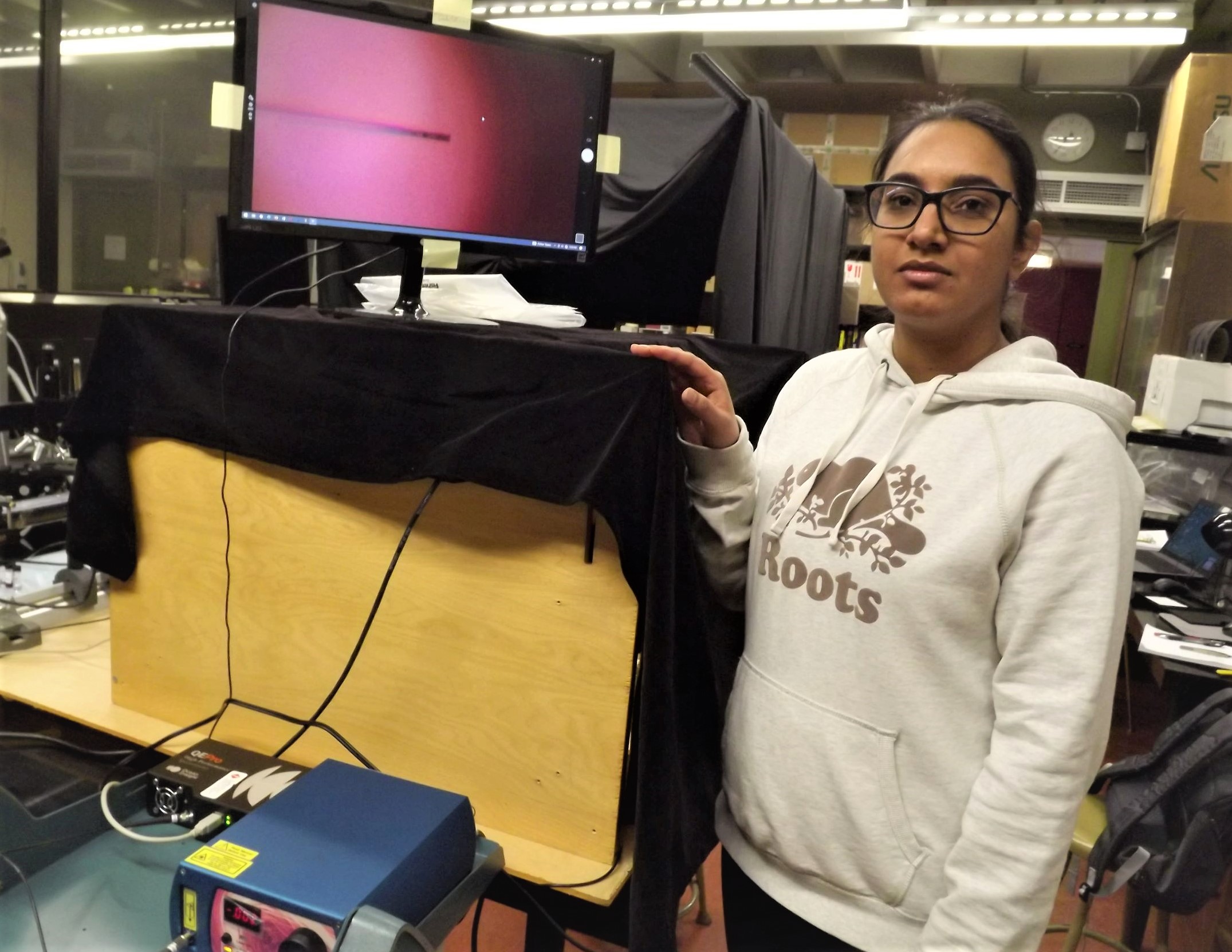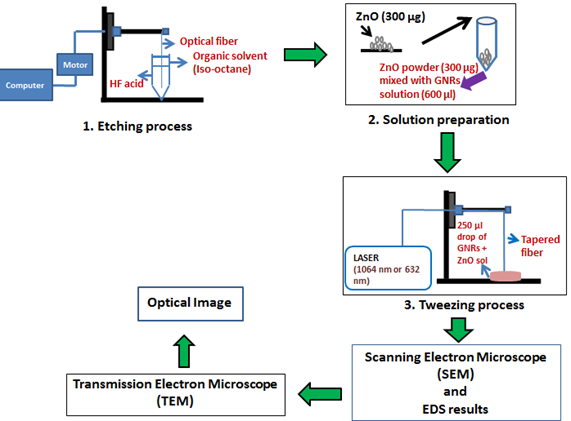Research in Action: Tool to analyze array of chemicals opens up multiple opportunities
Published in The Chronicle Journal Thursday, January 19, 2023.
BY JULIO HELENO GOMES
Behind a heavy door at a Lakehead University research lab, a team has been developing a system that will be able to detect and analyze chemicals at a sub-microscopic level.
 The heart of the system is an optical fiber-based probe. This system is envisioned as a multi-purpose tool that can be used for various tasks, from checking if crops are ready to harvest, to detecting pollutants in lakes and rivers, even diagnosing diseases such as cancer and COVID-19.
The heart of the system is an optical fiber-based probe. This system is envisioned as a multi-purpose tool that can be used for various tasks, from checking if crops are ready to harvest, to detecting pollutants in lakes and rivers, even diagnosing diseases such as cancer and COVID-19.
“It's an all-in-one production process. It's very simple, it's very cheap and it can be done quickly,” graduate student Joshua Trevisanutto says. “The idea is to have a very cost-effective, compact, easy to mass produce system that you could specialize to detect whatever minute chemical you want.”
Trevisanutto, who recently received his PhD in Chemistry and Materials Science, started working on an optical fiber probe with Dr. Gautam Das as a master's student. During the last year that project has been in the hands of PhD candidate Navneet Kaur, who has taken over from Trevisanutto in altering the design of the probe and investigating the potential of using it as a substrate for Surface Enhanced Raman Scattering (SERS), a technique to identify the unique fingerprint of chemicals using a laser.
“I found that combining SERS with optical fiber can provide a highly sensitive and specific method for detecting trace amounts of chemicals,” says Kaur, who is in the third year of her doctoral program. “This opens up exciting possibilities for remote sensing and other applications.” 
Utilizing standard optical fiber (the kind used for Internet connections), the team tapers the tip to an ultra-fine point by dipping it in acid, then coats it with tiny flecks of gold (gold nanorods) by using a process called “optical tweezing,” where a laser beam is introduced from the untapered end of the fiber. Every chemical has a unique characteristic and when light from a laser interacts with the chemical adsorbed on the gold, the composition of the chemical can be determined.
“This is a great contribution from our research group,” states Das, a professor in the department of Physics and graduate co-ordinator. “I think we are the first to report that you can use optical tweezing to get a unique distribution of the gold nanorods on the optical fiber, which could be used for the detection of chemicals at a molecular level.”
Along with Kaur and Trevisanutto, Das has written several technical papers on tapered optical fiber. Funding was provided by the Canada Foundation for Innovation (CFI) and the Natural Sciences and Engineering Research Council of Canada (NSERC). As well, in partnership with Wilson Analytical, Das received funding to manufacture the probe as a diagnostic tool for the detection of COVID-19.
Kaur's contribution included reviewing the literature on research in this area, developing a research plan for her PhD thesis, maintaining detailed records of research activities, collaborating with other researchers, and attending workshops and conferences. She sees an array of uses for this tool.
“For example, oil and gas companies that dispose of chemicals to water bodies, that are harmful to aquatic and human life, can be detected early on and stopped,” she says. “Another benefit is diagnosing a chemical responsible for cancer at its early stages.”
While it's typically difficult to determine the unique fingerprint of chemicals (the “Raman interaction”), the SERS technique using gold nanorods on optical fiber has increased the chances of detecting it in the smallest concentrations. Das says they have already gone beyond a microgram, a unit of one-millionth of a gram, or 1 x 10 -6 gram.
“In terms of detection limit – how far we can go – it's 10 -12 (to the power of minus-12) M,” Das says. “That's the kind of detection limit we have already achieved, which can be a good tool for detecting proteins (from saliva or a drop of blood) responsible for COVID-19 or any other proteins responsible for cancer.”
It can also be used in the food industry, to see if a chemical is being used to add colour to food or monitor chemicals from hops used to brew beer.
“The idea is to make something universal, that we can specialize the probes for every case,” Trevisanutto says.
In the meantime, Das is seeking an industrial partner to conduct tests in a secure lab using actual COVID-19 proteins as well as to commercialize the product and bring it to market.
“There are lots of things we are working on to optimize the system,” Das says. “Ultimately, we plan to use this system to detect chemicals in the agricultural sector. That is the part we are still working on.”
Gold nanorods and tapered optical fiber

What: A tool based on optical fiber coated with gold nanorods (GNRs) manufactured using a process called Optical Tweezing to detect, identify and analyze chemicals at a molecular level
How: The Plasmonic Structure – the distribution of GNRs on the tapered fiber and their interaction with chemicals when they are excited by a laser beam
Why: “Raman” is a technique to identify the unique fingerprint of a chemical, which occurs when stimulated by a laser. The odds of a Raman interaction are very low, but when there is a Plasmonic Structure the laser interacts with the gold nanostructure on the surface of the optical fiber and enhance the scattered electromagnetic radiation (SERS)
Research in Action highlights the work of Lakehead University in various fields of research.

